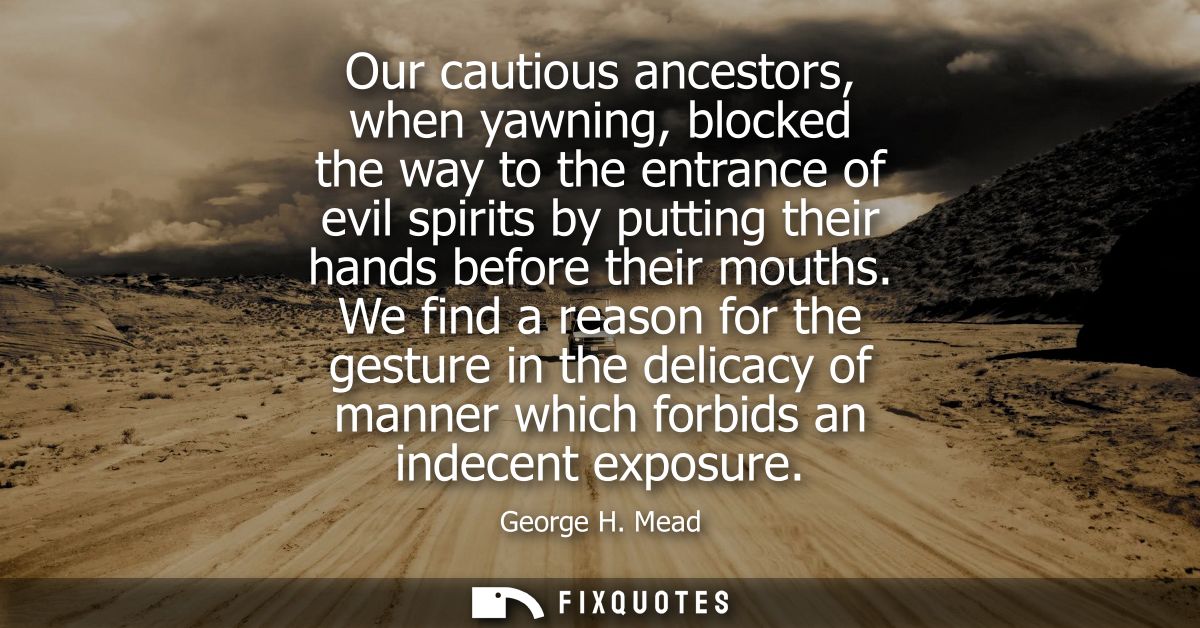"Our cautious ancestors, when yawning, blocked the way to the entrance of evil spirits by putting their hands before their mouths. We find a reason for the gesture in the delicacy of manner which forbids an indecent exposure"
About this Quote
George H. Mead considers a simple, everyday gesture, the act of covering one’s mouth while yawning, and traces its possible historical and cultural roots. He begins by evoking the superstition of “cautious ancestors", suggesting that gestures sometimes spring from deep-seated beliefs or fears rather than merely serving practical or polite functions. In this case, Mead refers to an old belief: the idea that yawning opens up a physical or spiritual vulnerability, and that covering one's mouth acts as a form of protection against malignant forces such as evil spirits seeking entry through the open mouth. This interpretation connects behavior to a world in which physical acts and spiritual danger are interwoven.
Moving from superstition to etiquette, Mead points out that even as modern society sheds these supernatural explanations, the gesture persists. Over time, the practical reason for the gesture gives way to a more abstract rationale located in “delicacy of manner.” The same act of covering the mouth, once regarded as a magical defense mechanism, is now viewed as a mark of polite behavior: a way to avoid “indecent exposure”, in this case, the mouth, considered private or offensive when wide open in a yawn.
Mead’s observation reveals how everyday customs often outlast the original contexts or beliefs from which they arose. Habitual acts like covering the mouth when yawning become ingrained features of social conduct, detached from their initial significance but rationalized anew as etiquette or good manners. The analysis serves as a reflection on the transformation of social rituals over time, suggesting that current understandings of propriety sometimes mask deeper or forgotten origins. Mead thus uncovers the layered meanings behind even the most mundane gestures, showing how practices shift from superstition to decorum, revealing the complex interplay between tradition, belief, and modern social expectations.
About the Author

